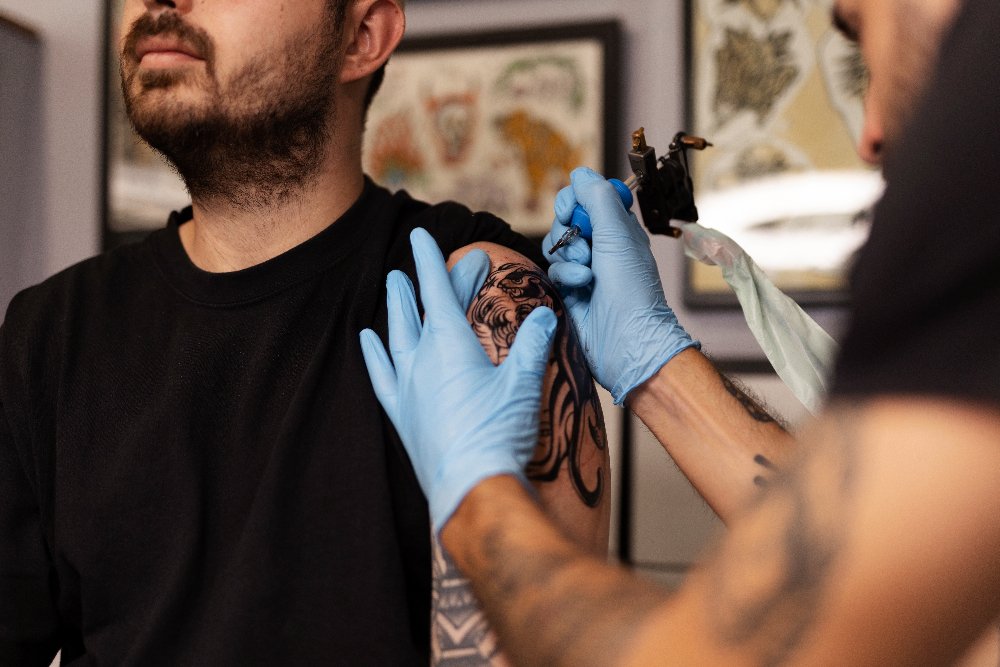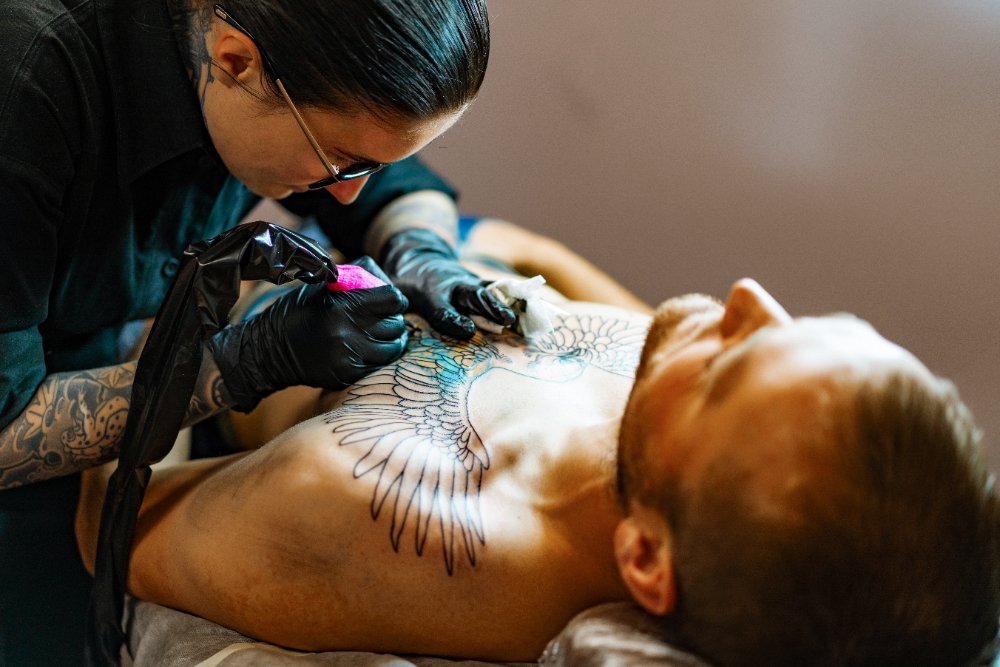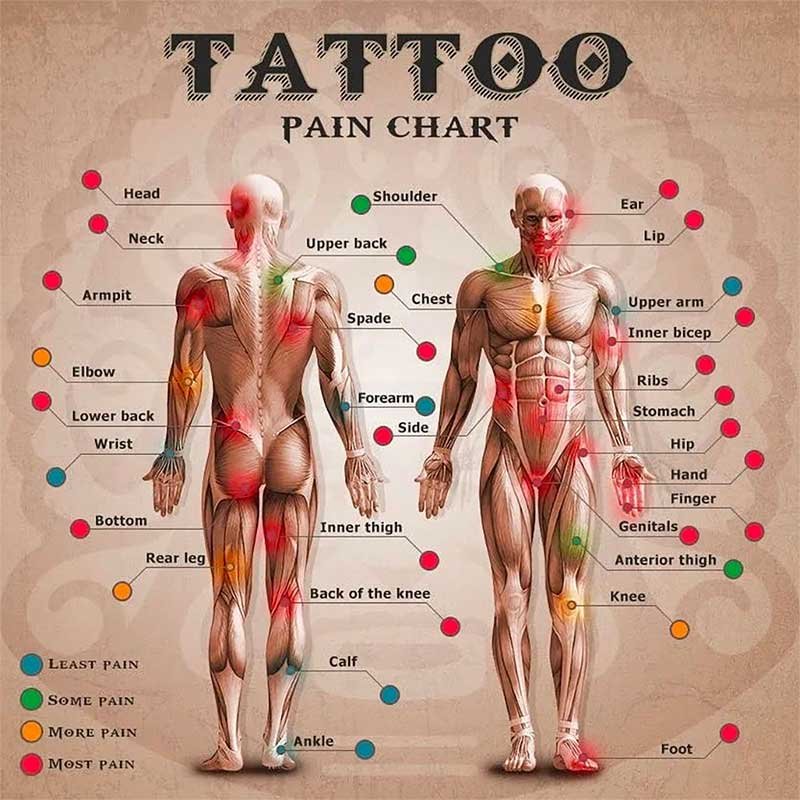

Getting a tattoo is a meaningful experience for many people, but there’s no denying that the process often involves pain. While all tattoos generally cause uncomfortable sensations, the level of pain can vary depending on the location of the tattoo on the body. Some areas of the body tend to be more painful to tattoo than others. Why is this the case? Here are the main reasons that explain this phenomenon.

1. High Number of Nerve Endings
One of the main reasons why certain areas are more painful to tattoo is the number of nerve endings present in those areas. Areas like the palms, fingers, neck, and face have a very high concentration of nerve endings. When the tattoo needle touches the skin in these areas, the nerve endings send stronger pain signals to the brain. As a result, the tattooing process in these areas often feels much more intense compared to other areas that have fewer nerve endings.
2. Thinness of Skin Layer
The thickness of the skin also plays an important role in determining the level of pain when getting tattooed. Areas of the body that have thin layers of skin, such as the wrist, rib cage, or ankle, are more likely to cause pain. In these areas, the tattoo needle has little barrier before it reaches the bone or nerve tissue, so the pain is more pronounced. In contrast, areas with thicker skin, such as the thigh or upper arm, are usually more comfortable to tattoo.
3. Proximity to Bone
Areas close to the bone, such as the spine, elbow, or shin, are often considered the most painful to tattoo. This is due to the vibrations from the tattoo machine that can be felt directly on the bone. When the needle pierces the skin in these areas, the vibrations are felt more intensely due to the lack of muscle or fat padding. As a result, the pain felt tends to be sharper and more uncomfortable.
4. Lack of Fat or Muscle for Cushioning
Fat and muscle serve as natural cushions that help reduce the intensity of pain as the tattoo needle pierces the skin. Areas of the body with little fat or muscle, such as the shoulder blades, ankles, and fingers, are usually more painful to tattoo. In contrast, areas such as the upper thighs or arms that have more muscle and fat tend to be more tolerant of pain.
5. Natural Sensitivity of Skin
The skin on some parts of the body is naturally more sensitive than others. For example, the skin on the inside of the arm, neck, or genital area is much more sensitive to touch than the skin on the back or outer arm. This natural sensitivity makes tattoos in these areas more painful. This is often due to a higher concentration of nerve endings and a more delicate skin structure.
6. Constant Movement in a Specific Area
Areas of the body that move or stretch frequently, such as the elbow, knee, or wrist, tend to be more painful to tattoo. The skin in these areas is more tense and often thinner, so the tattoo needle may cause additional irritation. Furthermore, the healing process of tattoos in these areas can also be more difficult as the constant movement can disrupt the skin’s regeneration process.
7. Psychological Factors
Psychological factors can also affect the perception of pain when getting tattooed. Some people may feel more anxious or tense when getting tattooed in certain areas, such as the face or neck, due to the realization that these areas are sensitive. This tension can worsen the perceived pain. Also, the expectation that certain areas will be more painful can increase pain perception.
8. Personal Level of Resistance to Pain
Everyone has a different pain threshold. Areas that are perceived as very painful to one person may be less painful when tattooing compare to another. Factors such as age, health conditions, and previous experience with pain can affect how a person perceives a tattoo in a particular area. Nevertheless, some areas of the body are universally considered more painful due to their anatomical characteristics.
9. Technique and Experience of the Tattoo Artist
The technique used by the tattoo artist can also affect the level of pain. Artists who are experienced and have good technique can usually reduce the pain felt by clients, even in sensitive areas. Conversely, rough or improper technique can increase pain, especially in areas that are already difficult to tattoo.
10. Duration of the Tattoo Process
The longer the tattoo process takes, the more likely it is that pain will be felt. Areas that require high detail or large size, such as the ribs or back, often require a long time to work on. When the pain lasts for a long time, the body may start to feel tired, making the pain feel more intense.

Pain is part of the experience of getting a tattoo, but the level of pain depends largely on the location of the tattoo on the body. Factors such as the number of nerve endings, thinness of the skin, proximity to bone, and the skin’s natural sensitivity all contribute to how painful the tattoo process is in a certain area. If you are planning to get a tattoo in an area known to be painful, prepare yourself well, both physically and mentally and make sure you choose an experienced tattoo artist. With the right preparation, your tattoo experience can be a meaningful, albeit slightly painful, memory.